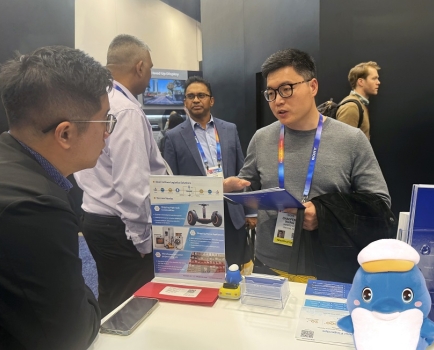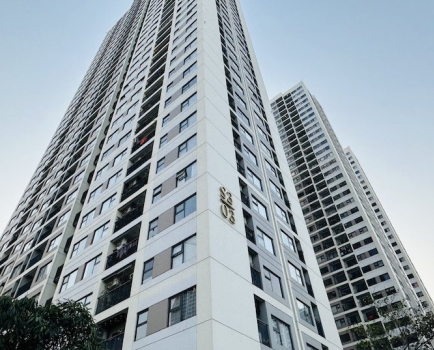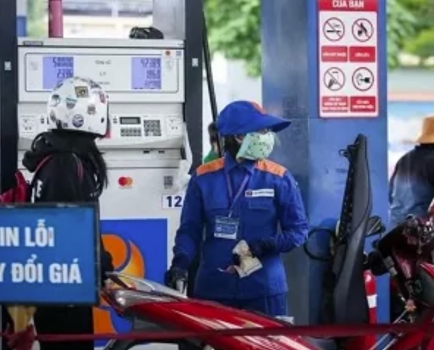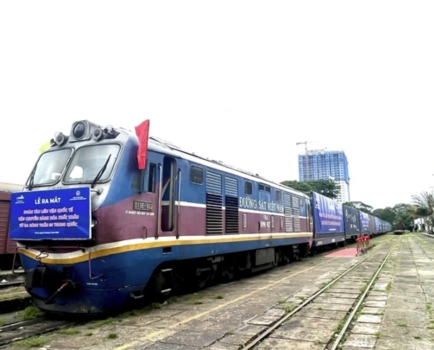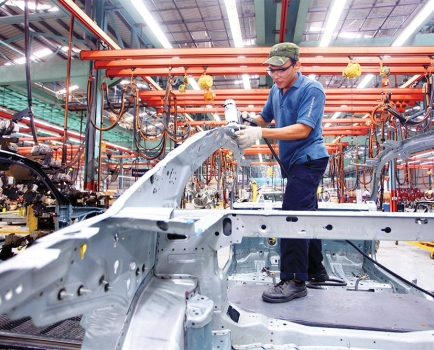“Cities within cities” becoming more prevalent across Vietnam
Sat, 09 Nov 2019 17:23:00 | Print | Email Share:
Property developers are increasing their interest in integrated large-scale projects and megacities, with the trend continuing to dominate the residential markets of Hanoi, Ho Chi Minh City, and neighbouring provinces.
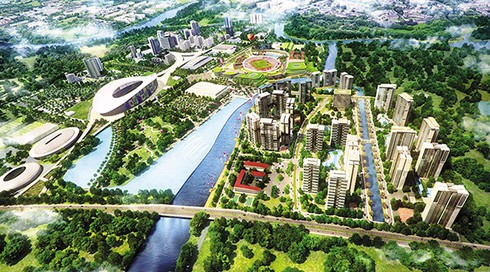
Saigon Sports City will be established in Ho Chi Minh City as part of efforts
to make the city smarter across several areas (Photo: Le Toan)
Singaporean property developer Keppel Land, in partnership with Keppel Urban Solutions, is starting its $500 million Saigon Sport City in Thu Thiem New Urban Area, the new business centre of Ho Chi Minh City, this week.
According to Linson Lim, president of Keppel Land Vietnam, the group will deliver solutions for sustainable urbanisation and capitalise on opportunities in integrated and mixed-use developments and to develop Saigon Sports City into a bustling hub, combining high-quality urban living with vibrant and healthy lifestyle concepts.
“We aim to establish Saigon Sports City as a model for other urban developments in Vietnam, especially in Ho Chi Minh City, which is undergoing transformation into a smart city,” he said earlier in the summer.
Meanwhile in Hanoi, the Vietnamese developer BRG Group and Japan’s Sumitomo Corporation have officially announced its $4.2 billion smart city project on the outskirts of the capital city.
The smart city will be state-of-the-art in that it will employ Industry 4.0 technology such as the Internet of Things to ensure energy is conserved. It will also feature surveillance cameras that come with the capabilities to recognise faces together with AI.
In parallel with the smart city design, it is expected that the joint venture will also build a detailed plan on the application of 5G technology and blockchain.
Urbanisation development
Developing smart cities will not only support Hanoi and Ho Chi Minh City to solve existing problems in transport infrastructure, healthcare, education, energy, and inadequacies in urban management and planning, but it will also activate new growth engines for the country.
The trend is soon realising the resolutions on Industry 4.0 that the Politburo has promulgated, which focuses on the target of at least three smart cities in three key economic regions across the country by 2025.
Ho Chi Minh City is forging ahead with smart city development initiatives by harnessing data and technology to create efficiencies, improve sustainability, and enhance the quality of life for the people living and working in the city.
City authorities are also encouraging developers and investors to develop the east of the city into an innovative area with many incentives.
Nguyen Thanh Phong, Chairman of Ho Chi Minh City People’s Committee said that the east of the city including District 2, District 9, and Thu Duc is offering good conditions for developing large-scale and innovative city projects.
Thu Duc district now is located with many universities and colleges with more than 10,000 teachers and professors, and more than 100,000 students.
In District 2 meanwhile, the Thu Thiem New Urban Area is now equipped with perfect facilities and infrastructure for many different functions. Moreover, the area will be also developed into an international financial centre for the whole region. Many large-scale transport projects are located in this area and link with neighbouring ones that are under construction such as My Thuy Crossroad, Kim Cuong Bridge, Cat Lai Bridge, and improvements to Dong Van Cong, Nguyen Duy Trinh, and Nguyen Thi Dinh roads.
In District 9, the infrastructure and transport system has been improving with a range of large-scale projects such as Hanoi Expressway, 1A National Highway, Metro line 1, Ho Chi Minh City-Long Thanh-Dau Giay Expressway, and others.
According to the American Chamber of Commerce (AmCham) in Vietnam, US investors are paying much attention on pouring money into and sharing experiences on developing innovative and smart cities in Vietnam. AmCham is also co-ordinating with the US Consulate in Ho Chi Minh City, the Ministry of Information and Communications, and relevant local authorities to set up the US-Vietnam Smart Cities Industry Group. The group has more than 30 members covering from urbanisation planning and software and hardware, to energy and wastewater treatment solutions.
Japanese investors, meanwhile, are also looking towards Vietnamese smart cities and urban development areas. According to Keiji Kimura, chairman of the Japan Conference on Overseas Development of Eco-cities (J-CODE), there are many Japanese investors already involved in urban infrastructure and development in Vietnam.
“Among those are Obayashi, Shimizu, Hitachi, Sumitomo Construction, Mitsui, Maeda, and many others, all partnering with domestic investors to build up large-scale projects in Vietnam,” Kimura said.
J-CODE has 57 members with a vault of experience in financial management, development planning, and urban infrastructure creation.
Urban landscaping projects are divided into three categories: those using the state budget, those regarding commercial housing construction in combination with urban development, and those in the form of public-private partnerships. Before J-CODE, the Japan International Cooperation Agency has also been involved in many infrastructure improvement projects in Vietnam.
Le Hoang Chau, chairman of Ho Chi Minh City Real Estate Association, said that Japanese investors would bring about much experience and potential budgets for Vietnam to develop urban areas. “Particularly over the past five years, a number of Japanese investment funds and companies have co-operated with Vietnamese real estate companies in the form of buying shares, contributing investment capital, and lending,” said Chau.
Among those are Tokyu, Hankyu, Nishi Nippon Railways, Mitsubishi, Sanyo Home, and Creed Group.
“Japanese developers have so far been careful in making any big decisions, but now they are aware of the high potential of the Vietnamese market, and they are not wanting to miss out,” added Kimura.
Crucial planning
According to JLL Vietnam, the trend of creating a “city within a city” commonly referred to as large-scale integrated developments became the next big trend several some years ago.
This urban form has grown in popularity as developers seek to attract buyers with holistic, well-planned communities within a city for those who wish to avoid the chaos created by rapid urbanisation and lagging infrastructure in shared facilities. Nowadays, developers taking part in city planning have to carefully understand the fundamentals in order to create sustainable value for their large-scale projects.
The sustainable integrated development must be combined with planning traffic and transport infrastructure, sensible space planning, creating and maintaining public facilities, and teaming neighbourhoods with shared facilities, according to JLL.
Due consideration of planning traffic infrastructure is crucial for large-scale developments. With growing car ownership in Vietnam, congested roads and lack of parking space will spur the demand for functioning traffic solutions. Sufficient parking, integrated access to surrounding roads, and public transport will become key selling points that will enhance a development’s value.
As the size of developments grows, sensible space planning for various functions and building scales has become a challenge for developers. To achieve convenient, functional, and diverse quality public spaces, careful consideration of city planning aspects is mandatory.
By: VIR/VOV
Source: https://english.vov.vn/economy/cities-within-cities-becoming-more-prevalent-across-vietnam-405943.vov
---------------------------------------------
Same category News :



